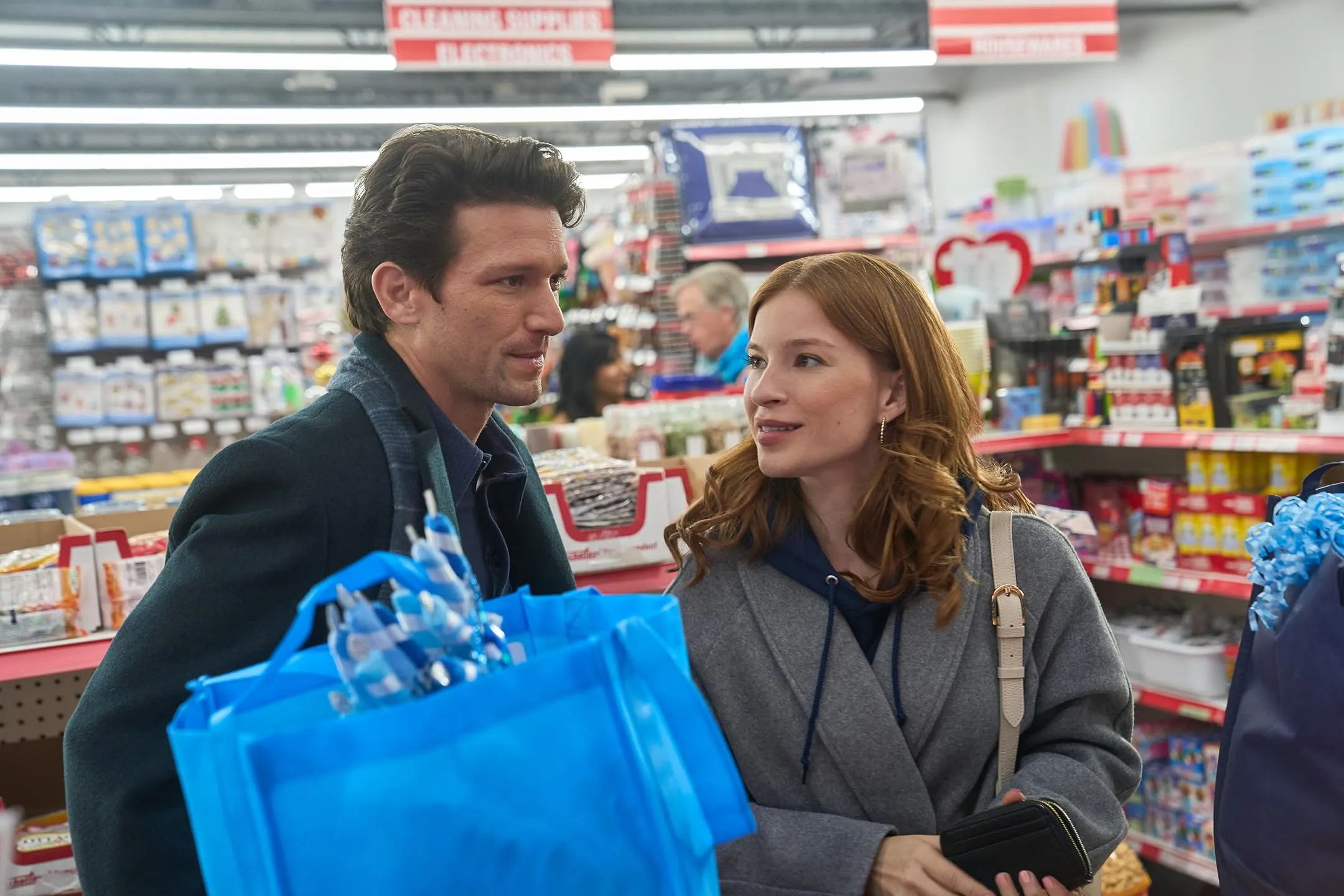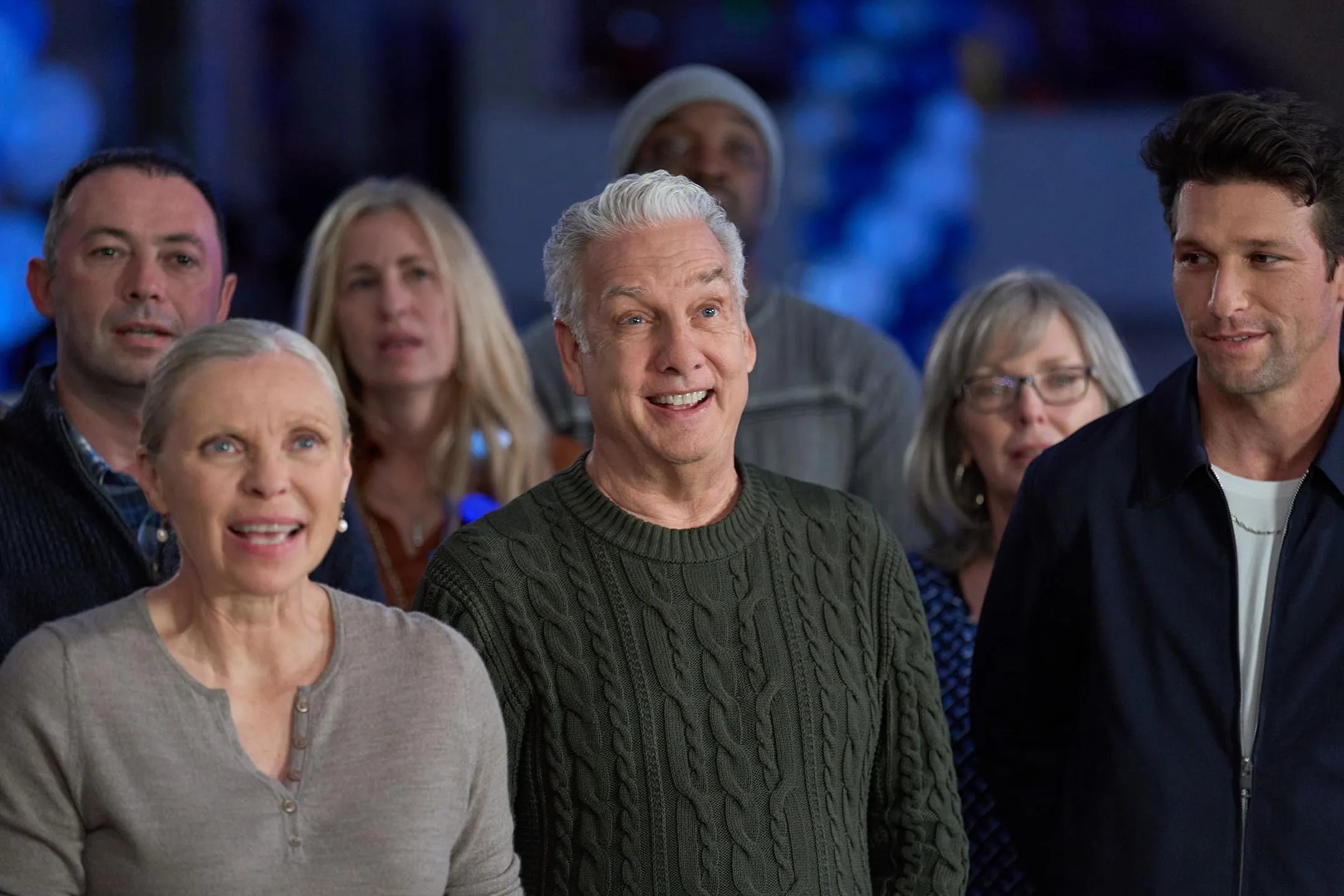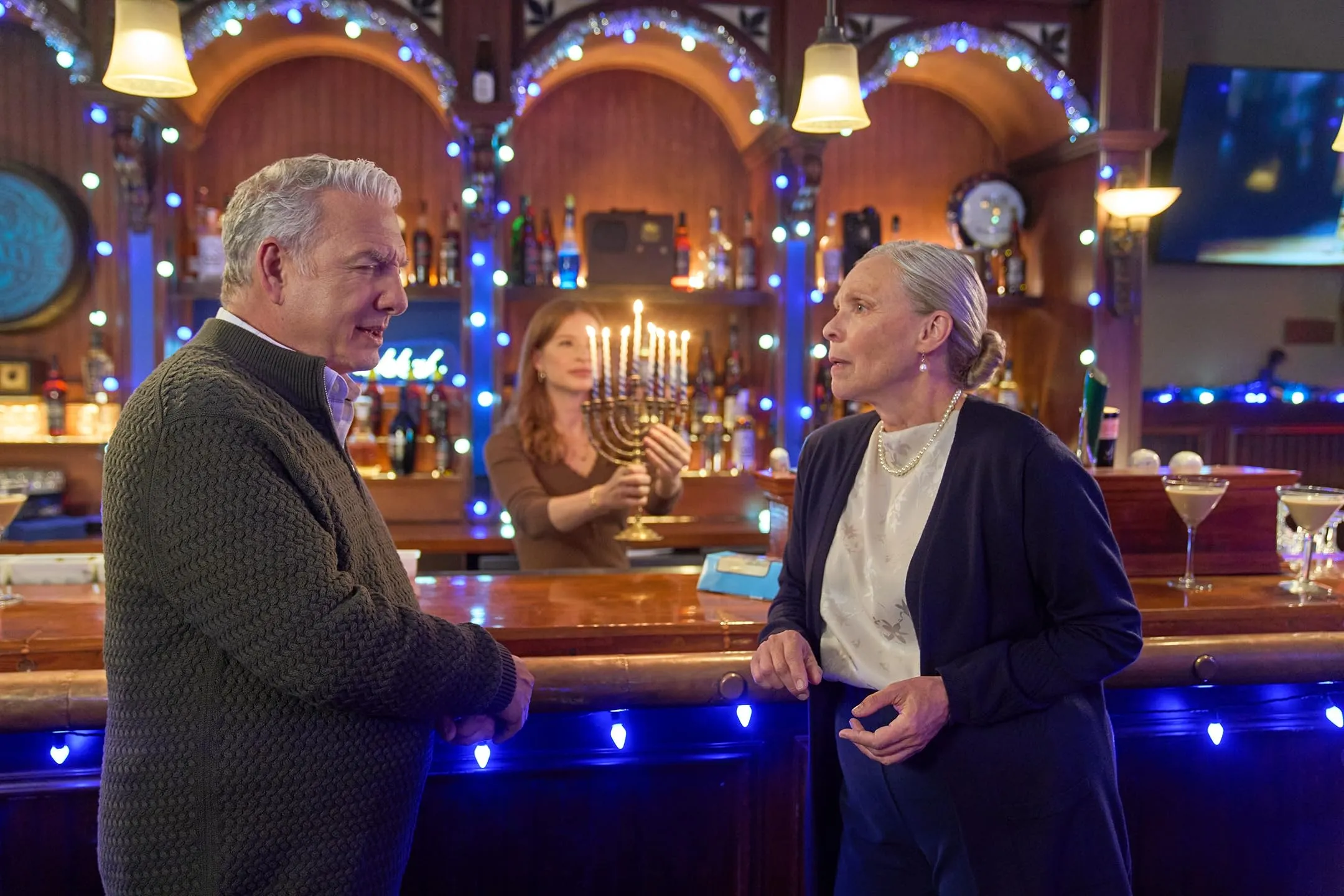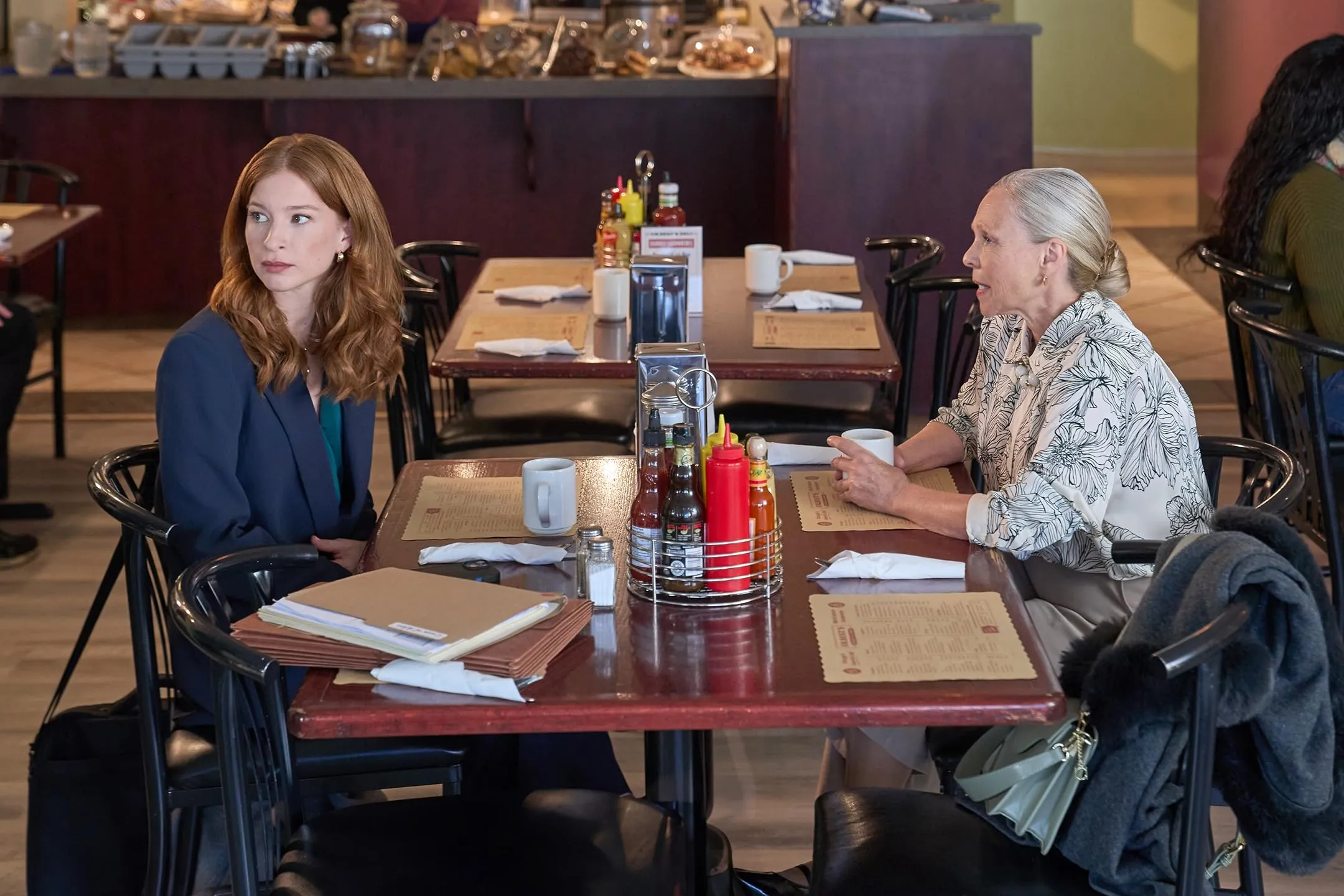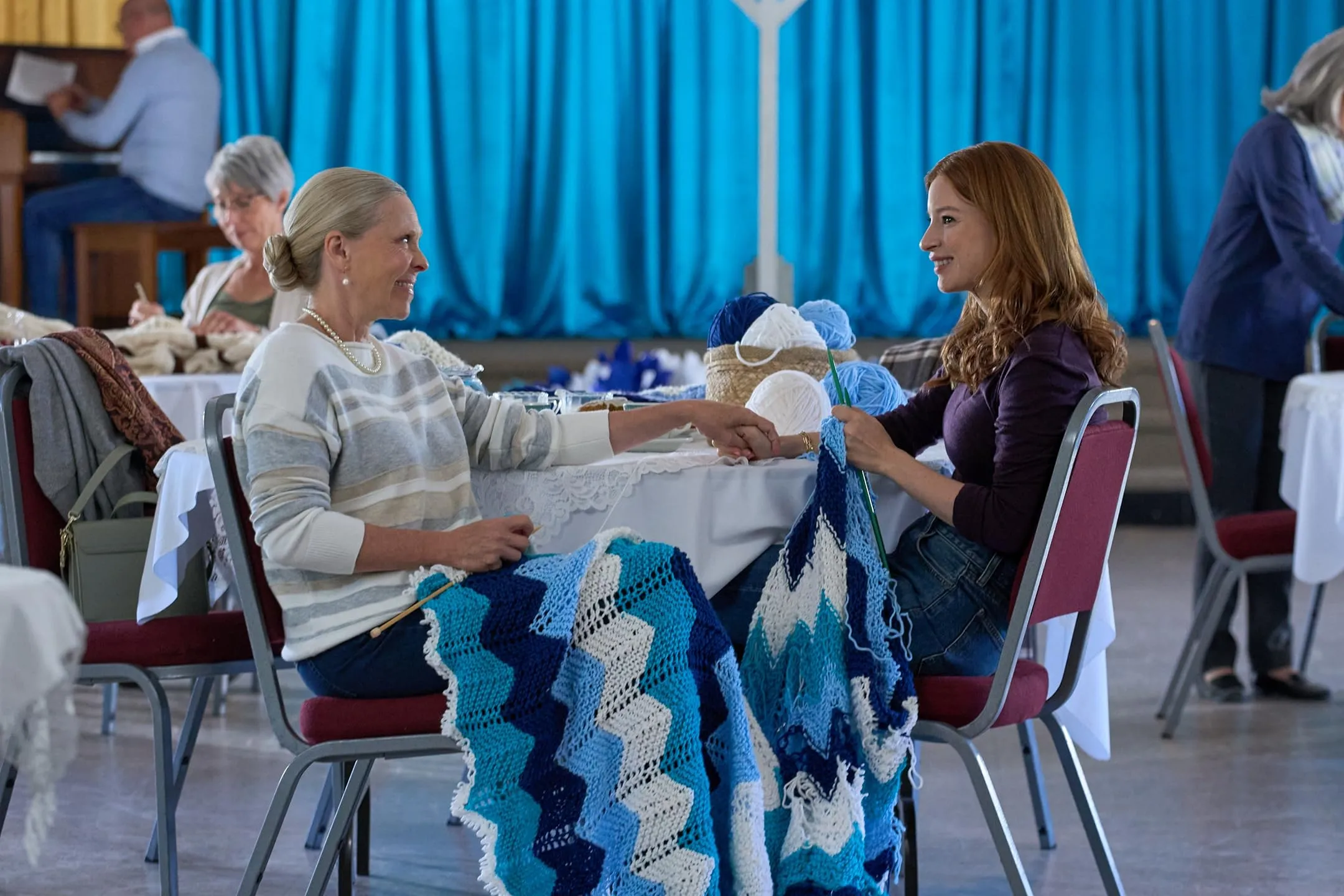In Hanukkah on the Rocks, we meet Tory, a corporate lawyer whose life is upended by a surprise layoff. This event pushes her to reevaluate her work and her entire identity, a concept that is relevant in today’s gig economy, where job security feels more and more vulnerable.
Tory’s voyage is set against the bustling backdrop of Chicago, where she encounters Jay, an attractive young man attempting to persuade his grandfather, Sam, to emigrate to warm Florida. Their encounter comes during a frantic chase for a prized package of Hanukkah candles at a local party store, launching both characters into a world of unforeseen connections.
Tory begins to form relationships with the club’s colorful clients as she takes on a bartender role at Rocky’s, a quaint neighborhood bar with a festive vibe.
This transition from corporate life to a more communal setting exemplifies her internal struggle: juggling her professional goals with familial expectations and the dread of disappointing her loved ones. The film deftly depicts Tory’s journey of self-discovery as she deals with her newfound freedom while navigating the complexities of love and tradition throughout the holiday season.
Character Analysis: Unraveling Connections
Tory, a character whose path from isolation to connection is central to Hanukkah on the Rocks, is at its heart. Initially shown as an ambitious corporate lawyer, Tory exemplifies the workaholic archetype—someone who has sacrificed personal relationships for professional goals.
The layoff catalyzes her metamorphosis as she navigates her newfound freedom. Tory’s struggle to find community and purpose is brilliantly highlighted by her interactions with her Bubby, a vivacious matriarch who represents tradition and familial love, and her sister Becca, who acts as a bridge to her previously neglected personal life. Their relationships reveal the complexities of Tory’s character, showcasing her struggle to balance her desire for emotional support and connection with her professional identity.
Jay, on the other hand, introduces a distinct set of motivators. His attempt to persuade his grandfather, Sam, to relocate to Florida exemplifies a generational struggle between the desire for independence and the pull of familial relationships.
As Jay spends time with Tory, we observe his development; he begins to appreciate the importance of remaining true to his heritage while still finding personal fulfillment. Their shared experiences, such as Rocky’s chaotic yet lovely ambiance, deepen their friendship by underlining themes of love that bloom in unexpected places.
The supporting characters, particularly Lottie, Anthony, and Sam, add to the narrative and contribute greatly to the film’s communal spirit. Lottie epitomizes Rocky’s welcoming aura with her infectious energy and sense of humor, serving as a mentor figure for Tory as she begins her new role.
An aspiring novelist, Anthony adds a sense of artistic ambition, while Sam anchors the story in tradition and wisdom. Each character enhances the bar’s atmosphere and represents larger themes of community, belonging, and the importance of shared experiences over the holiday season. They weave a tapestry of relationships that demonstrate connection’s importance, particularly during emotional upheaval times.
Themes and Motifs: Celebrating Community and Tradition
Hanukkah on the Rocks expertly explores themes of community and belonging, with Rocky’s providing a bright backdrop for connection and support. This neighborhood tavern is more than simply a setting; it’s a microcosm of the various relationships that blossom during the Hanukkah holiday.
The film emphasizes the concept of a chosen family, illustrating how individuals come together to form relationships that can feel stronger than blood bonds. As Tory transfers from her solitary corporate life to a role in this warm, accepting community, we witness her find the thrill of shared experiences and collective celebration. The colorful interactions among clients give humorous relief and highlight the importance of connection in overcoming personal challenges.
The narrative, in contrast, is replete with profound themes about the conflict between tradition and progress. Each character struggles with familial expectations, especially around the holidays when cultural traditions peak.
Tory’s internal turmoil about her job loss and desire to realize her family’s dreams provide fertile ground for personal growth. Similarly, Jay’s struggle to persuade his grandfather to relocate highlights a generational divide—his desire for freedom conflicts with his family’s deeply held ideals. This dynamic parallels broader cultural trends, in which individuals are increasingly challenged to redefine their identities while remaining true to their heritage.
The film masterfully illustrates how these characters strike a careful balance between adhering to long-held traditions and embracing the changes that come with new experiences, making it a timely examination of current cultural identity.
Performances and Direction: Heartfelt Deliveries and Craftsmanship
Stacey Farber’s depiction of Tory highlights Hanukkah on the Rocks, conveying the character’s emotional complexity with surprising nuance. Farber expertly guides Tory’s transformation from a powerful corporate lawyer to a more grounded individual seeking community and purpose. Her relationship with Daren Kagasoff, who plays Jay, adds a fun element to the film.
Their interactions are filled with genuine warmth and humorous timing, making their growing romance feel both relatable and genuine. Farber gives Tory an emotional depth, especially in moments of weakness when she confronts her job loss and familial constraints, allowing the spectator to empathize with her struggles.
The supporting cast adds to the narrative with noteworthy performances that heighten the film’s warmth and humor. Marina Stephenson Kerr excels as Bubby, Tory’s vivacious grandma, filling the role with sass and insight. Bubby’s amusing remarks and emotional encouragement contrast Tory’s more serious moments, emphasizing the generational relationships that support the story. Characters like Lottie and Anthony, played by Lauren Cochrane and Dan De Jaeger, offer depth to the group. Anthony’s artistic ambitions and Lottie’s lighthearted mentorship build a sense of community that enhances the bar’s community vibe.
In terms of direction, the film stays true to Hallmark’s hallmark flair while embracing its identity. The direction is fluid and inviting, allowing the wonderful moments to flow naturally. The cinematography depicts Rocky’s intimate atmosphere, making it feel like an important character in its own right.
The writing is sharp and entertaining, with humor that strikes a mix between humor and deep sentiment. This combination of wit and warmth throughout the film ensures that moviegoers remain immersed in the characters’ adventures. The fun banter and brilliant one-liners lift the narrative, reflecting a current perspective that feels both fresh and familiar, similar to the best works of contemporary directors such as Greta Gerwig.
Setting and Cultural Representation: A Tapestry of Tradition
Hanukkah on the Rocks’ setting is critical to its narrative, with Rocky’s bar serving as the story’s colorful heart. This quaint business is more than just a backdrop; it serves as a social hub where characters congregate, allowing their stories to intersect.
Rocky’s warmth captures the essence of the occasion, creating a secure setting for connection and reflection. The film captures its essence by showcasing Chicago’s Jewish community with authenticity and respect. The bar’s eclectic clientele provides a microcosm of cultural interactions that reflect contemporary societal issues, making it relatable to a wide audience.
Cultural representation is an important aspect of the film, especially in its depiction of Hanukkah rituals. The film skillfully incorporates features such as menorah lighting and the importance of family reunions, integrating these customs into the characters’ lives in a genuine and joyful way. The representation of traditional meals, such as latkes sizzling in the kitchen and sufganiyot stacked high, adds to the narrative by illustrating how food can serve as a conduit for cultural heritage and familial ties.
This portrayal goes beyond surface-level inclusivity; it embraces the complexities of cultural identity in the modern era, reflecting a generational change toward a more inclusive understanding of what it means to cherish one’s heritage. Hanukkah on the Rocks pays homage to its heritage and welcomes people from all walks of life to engage in the universal themes of love, community, and belonging.
Narrative Style and Writing: A Harmonious Blend of Humor and Heart
Hanukkah on the Rocks has a well-paced narrative that keeps viewers interested throughout. The film maintains an excellent balance between romantic and humorous components, ensuring that neither overshadows the other.
The timing enables moments of laughter to transition effortlessly into more melancholy situations, echoing the unpredictable rhythms of holiday parties. This meticulous orchestration produces a sense of authenticity, reminiscent of the interplay found in classic ensemble films—a homage to the works of directors such as Noah Baumbach, who brilliantly blends humor and heart.
A remarkable aspect is the dialogue, which is filled with sharp, memorable phrases that reveal character depth and inject humor into the narrative. For example, Bubby’s comments provide comic relief and insight into the generation gap, bolstering her role as a knowledgeable yet sassy matriarch.
Each character has a distinct voice and contributes to a complex tapestry of interactions that feels genuine and enjoyable. These clever conversations advance the plot and deepen our comprehension of the characters, making their travels even more relatable.
Conclusion and Personal Reflection: A Celebration of Heritage and Connection
Hanukkah on the Rocks is a poignant and compelling exploration of community and identity, making it a welcome addition to holiday cinema.
Its comprehensive depiction of Hanukkah rituals and the importance of the chosen family resonates emotionally, reflecting greater cultural movements toward inclusivity and connection.
The film’s ability to blend humor and sad moments catches the essence of what it means to celebrate together, making it reminiscent of my favorite ensemble pieces from the French New Wave.
It’s a film that entertains and encourages spectators to think about their relationships and cultural heritage, making it an important cultural asset today.
The Review
Hanukkah on the Rocks
Hanukkah on the Rocks is a delightful celebration of community and cultural identity that expertly blends humor and poignant moments. With great performances, particularly from Stacey Farber, and a bright setting that captures the essence of Hanukkah, the film strikes a chord on numerous levels. Its insightful representation of tradition and the importance of connection mirrors current cultural developments, making it an important addition to holiday movies. This film entertains and prompts meditation on the relationships that bind us.
PROS
- Engaging performances, particularly by Stacey Farber.
- Authentic depiction of Hanukkah traditions and community.
- Strong balance of humor and heartfelt moments.
- Vibrant setting that enhances the narrative.
- Thoughtful exploration of cultural identity.
CONS
- Some familiar tropes may feel predictable.
- Pacing could be uneven in spots.
- Supporting characters could use more development.









































